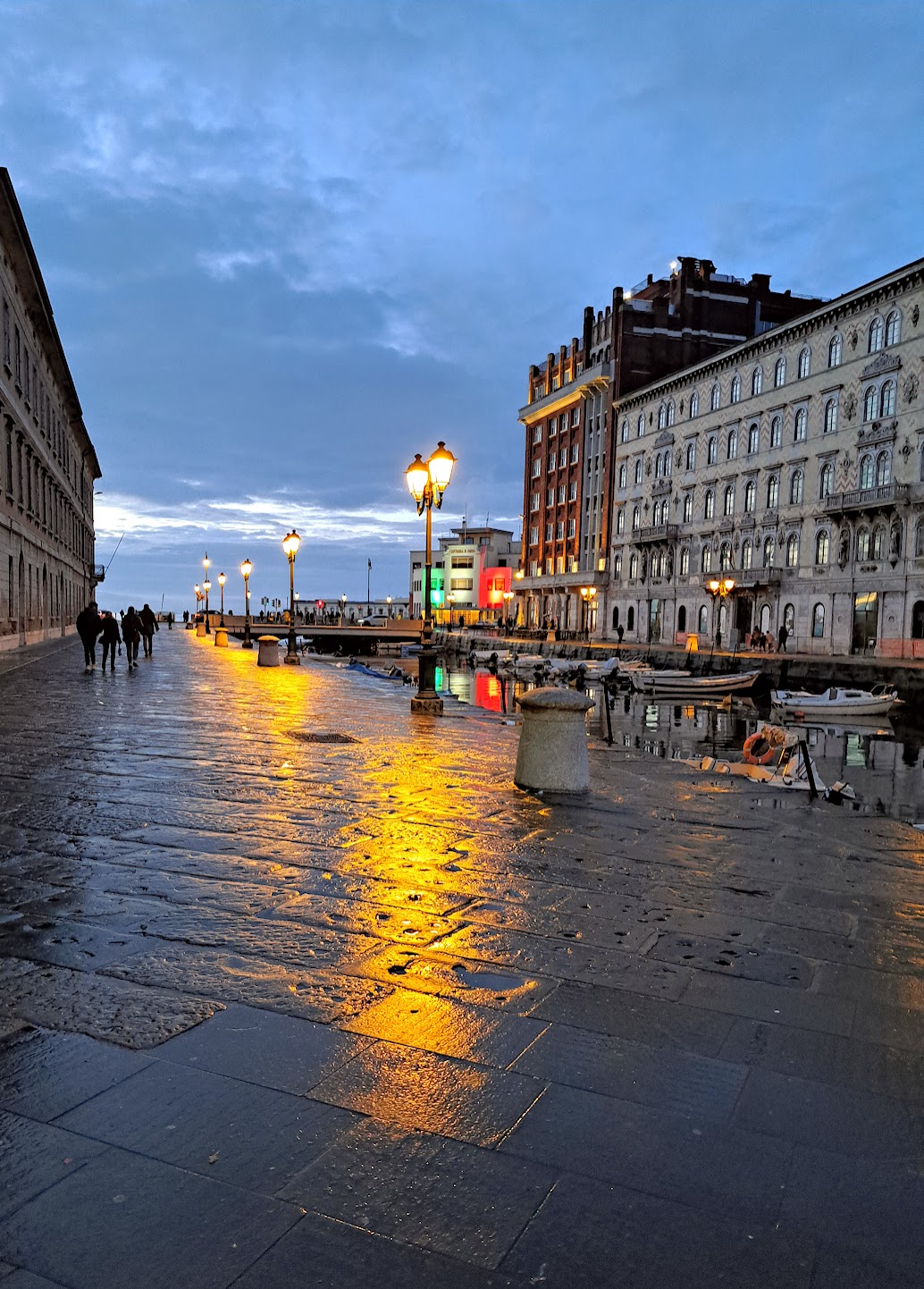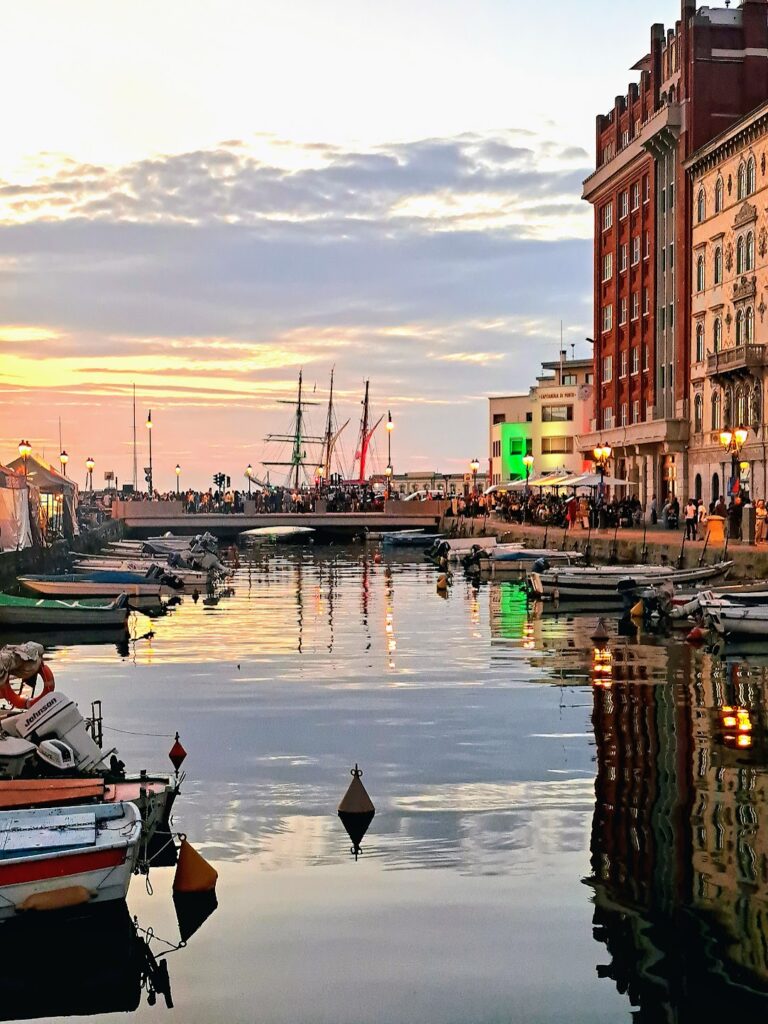
Along the sunny side of the navigable canal, you’ll find bars, cafés, and restaurants where you can enjoy something delicious at any time of day, regardless of siesta. Every third Sunday of the month, there is an antique market, and at least twice a year, the Street Food Festival takes place here. There is also a Christmas market, and during the Barcolana sailing regatta, you’ll find a variety of vendors. Outside the summer season, you might even come across a carousel.
At the end of the Canal Grande stands the Catholic Church of the Miracle-Working Saint Anthony (Chiesa di Sant’Antonio Nuovo), and nearby is the dome-shaped Serbian Orthodox Church of Saint Spyridon.

The first palace along the canal, facing the sea, is the headquarters of Generali, founded in Trieste, next to which stands the Palazzo Gopcevich, home to several museums today. Originally, the canal had three bridges (White Bridge, Red Bridge, and Green Bridge), but only the Red Bridge, the Ponte Rosso, remains. A pedestrian bridge, the Passaggio Joyce or Ponte Curto, was recently built. The bronze statue of James Joyce is located on the Ponte Rosso because it’s where the building that housed the Berlitz school, founded by the writer, once stood.
The canal and the entire neighborhood, from Corso Italia to the train station, were developed in the 1700s during the reign of Maria Theresa, which is why the area is called Borgo Teresiano. Previously, saltworks lined this area, all of which were buried, leaving only this canal in Trieste. Later, the canal became even shorter when, in 1934, the last section was filled with rubble from demolitions in the ghetto and old town areas. It is even said that a German torpedo boat lies at the bottom of the canal.